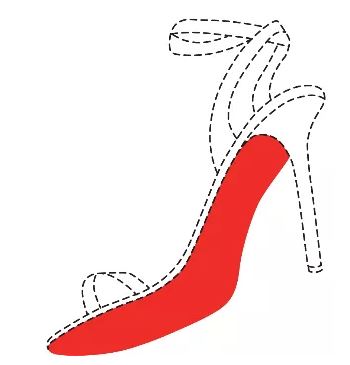China’s Supreme Court Rules in Favor of Christian Louboutin’s Red Sole Trademark
In January 2020, China’s Supreme People’s Court (最高人民法院) ruled in favor of Christian Louboutin for her red sole trademark. The Supreme People’s Court decision upholds an earlier decision from Beijing Higher People’s Court that ruled even though single color marks are not listed as eligible in Article 8 of the Chinese Trademark, Article 8 does not exclude marks not enumerated in Article 8. Specifically, Article 8 lists combinations of colors as eligible for application but does not list a single color as eligible.

Louboutin’s original WIPO trademark application claimed “The mark consists of the color red (Pantone No. 18.1663TP) applied to the sole of a shoe as shown in the representation (the outline of the shoe is not part of the mark but is intended only to show the placement of the mark).” Initially, China’s Trademark Review and Adjudication Board (TRAB) rejected the mark for lacking distinctiveness. Louboutin then filed suit with Beijing Intellectual Property Court, which ruled the mark was three-dimensional and required the TRAB to reexamine the mark for distinctiveness in light of this.
In the second instance, the Beijing Higher People’s Court ruled that mark is not a three-dimensional mark but instead a single color mark, the placement of which is specified. Further, “Article 8 of the Trademark Law stipulates that ‘any sign that can distinguish the goods of natural persons, legal persons or other organizations from the goods of others’ can be Registered as a trademark. Although the elements of the trademark application for the trademark application in this case are not explicitly listed in Article 8 of the Trademark Law, they are not explicitly excluded by the Trademark Law from the trademarks that can be registered as trademarks, and the Trademark Review and Adjudication Board has not determined the trademark applied for in this case is not a sign that can be registered as a trademark … “
The China National Intellectual Property Administration (CNIPA, formerly the TRAB) then appealed to the Supreme People’s Court, which affirmed the Beijing Higher People’s Court decision. CNIPA argued that Article 8 precluded the registration of the mark as single color marks are not enumerated therein. The Supreme People’s Court explained that the enumeration of eligible elements is not an exclusion of unlisted elements. Elements not specifically excluded by the Trademark Law can also be registered.
The red sole trademark now awaits examination for distinctiveness based on this clarification of Article 8. The case opens up the possibility of registering other types of non-traditional trademarks in the future, assuming they have sufficient distinctiveness.
Back to All Resources

